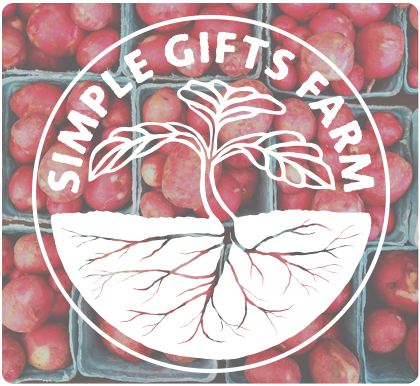People often ask what we do all winter, perhaps imagining that farmers hibernate, or take a 2-month vacation. We do indeed ramp down the intensity of the labor, but winter is also when we put on our thinking caps and do our homework to build on our successes and near-misses to make the next growing season better.
This past winter, Farmers Dave and Jeremy did some helpful homework – in part, because they worked with a farm business planner to give some structure to their planning – and developed enterprise budgets for many of the component crops we grow. Not surprisingly, some crops produce better than others, and some crops are more labor-intensive than others. We have enough knowledge of this land now to put some site-specific numbers into these analyses, and learned a whole lot about which crops work well for us, which crops could be profitable with a bit more focused attention or change in technique, and which ones just don’t add up.
Over the course of the past several years, we have recorded pages of information on how many rows of each crop we planted, how much we harvested out of those plantings, how many people came to the CSA on a given day, how much lettuce they took, etc. This year we used that data to generate some real numbers on the costs and yields of each crop we’ve grown. This has helped us to develop a truer picture of which crops are the most profitable per acre. Another way to think of this, if you are lefty enough to be uncomfortable with the term “profit” is which crops help us get the best value and highest yields to you, our shareholders out of our limited land base and effort.
We are putting these analyses into practice on the farm this year in the form of some adjustments to our crop plantings. Cucumbers, potatoes, summer squash, and tomatoes are consistent winners for us in both the profit and taste categories, and we are expanding these plantings. We realized that with a bit more focused attention, we can increase our yield and profit on carrots and greens, and add some more diversity to our storage crops like rutabaga and parsnip. We had a near-disaster with our sweet pepper starts in the greenhouse this season, so will be growing about the same amount of these delicious vegetables this year, but we plan to expand this crop next year. On the other hand, some crops just don’t add up for our farm that has a limited land base. Broccoli and melons are two crops that we reluctantly decided to grow less this year. These two crops work better on a larger-scale, lower-labor farm model, as their yield per acre isn’t that high but on a larger acreage can be grown and harvested efficiently. Rather than trying to have a consistent supply of broccoli by putting in five plantings, we’ll be focusing our effort to get two plantings to do really well. Similarly, we’re planting one larger melon crop, rather than two.
If our marketing was to retail outlets, we would specialize more. With a CSA, we know that diversity is key, so our refinements are more about adjusting proportions. We also love to eat broccoli, and I think our children might just run away from home if we stopped growing watermelons. Wendell Berry advised, “So, friends, every day do something that won’t compute.” We are working to bring better balance between the things that we love and do compute and those that we do solely for love in the continuing adventure in our life of farming.

